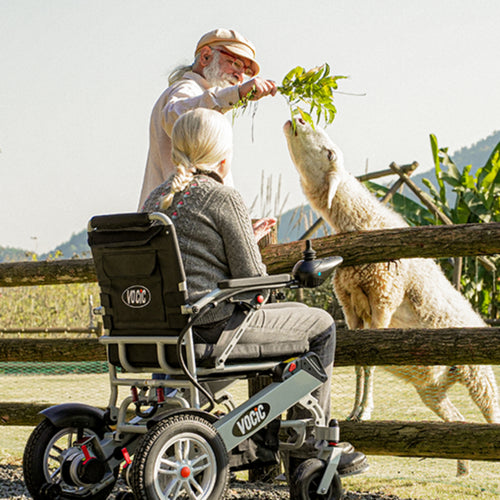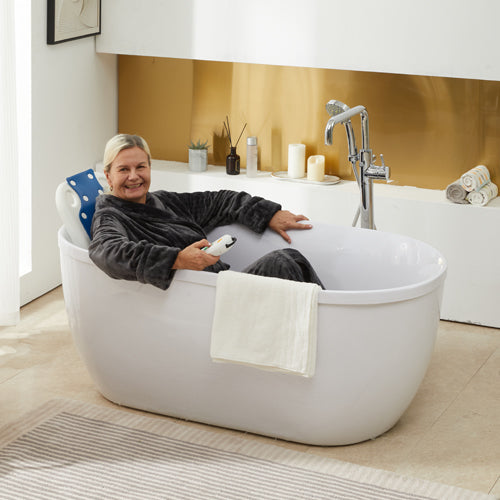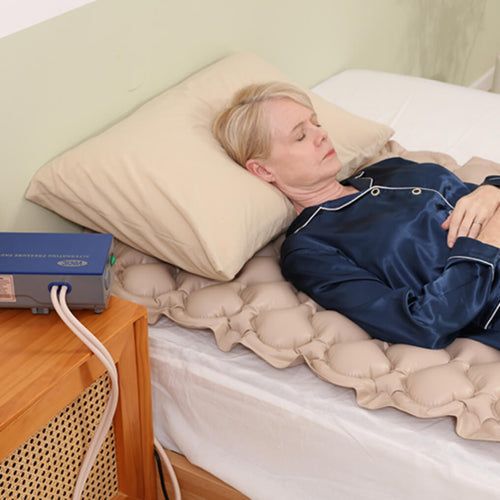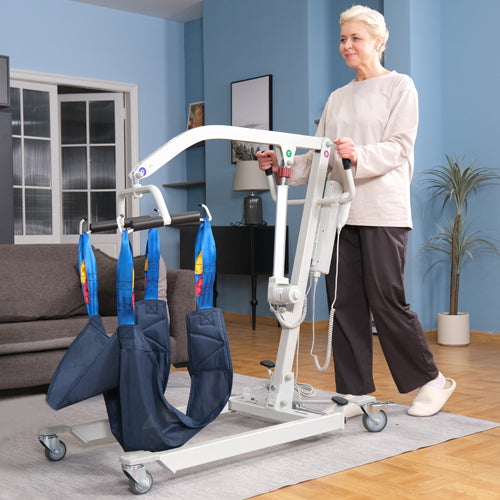Choosing the right mobility aid can ensure comfort, accessibility, and independence when traveling internationally. The choice of wheelchair, scooter, or mobility aid type is determined by the traveler's needs, the destination, and travel regulations regarding mobility aids.
This article will take you through the considerations of different mobility aids, such as portability, compliance with airline regulations, and adaptability to different environments, to ensure a smooth travel experience.
What Are Airline Policies Regarding Mobility Aids?
When planning to travel with a mobility aid, understanding airline policies can ensure a smooth journey. Here are some policies to consider:
1. Notification and Assistance
Notify the airline about your mobility aid in advance to ensure necessary services like boarding assistance and airport navigation are arranged. American Airlines, for example, offers priority boarding and may provide special assistance for passengers with mobility aids to ensure a smoother travel experience.
2. Size and Weight Restrictions
Airlines have specific limits for mobility aids. Non-collapsible wheelchairs and scooters must be checked in, while collapsible ones may be stored in the cabin. American Airlines provides spaces for collapsible wheelchairs with set dimensions for storage.
3. Battery Regulations
Ensure your mobility aid's battery complies with airline regulations, especially for lithium-ion batteries. Airlines adhere to International Air Transport Association (IATA) guidelines, which include battery size restrictions and spare battery requirements.
4. Handling and Storage
Airlines commit to safely transporting mobility aids. Secure your device properly to prevent damage during transit, using containers or straps provided by airlines if necessary.
Prepare for additional security screening of your mobility aid, focusing on batteries and device safety. Arrive early at the airport to allow time for these checks.
6. Compensation for Damage
Know the airline’s policy for damaged mobility aids. Having the right documentation and understanding your rights are essential for managing claims and repairs in case of damage or loss.
The above points are usually the relevant policies of airlines on mobility aids. It is recommended to consult the airline before traveling to see whether its own mobility aids meet the policy requirements and whether they can be carried on board the aircraft.

What Should I Pay Attention to When Carrying a Mobility Aid?
When traveling with a mobility aid, there are some things to consider to ensure a smooth and safe journey:
1. Notification and Airline Policies
Before traveling, please notify the airline in advance that you will be traveling with a mobility aid. This notification allows the airline to make the necessary arrangements for your convenience and safety, ensuring that they can accommodate the size and requirements of your mobility aid within their specific policies.
2. Choosing the Right Mobility Aid
Choose a mobility aid that best suits the terrain of your destination and the activities you expect to be doing. Lightweight, foldable mobility aids are ideal for travel, such as mobility scooter foldable and lightweight wheelchairs, as they are easier to transport and store, especially on an airplane or in a small vehicle.
3. Checking the Condition of the Equipment
Before traveling, you need to make sure your mobility aid is in good working order. Thoroughly inspect all parts to ensure reliability and safety during your trip. It is okay to carry basic spare parts and tools for emergency repairs so that you can solve problems that may arise while away from home.
4. Safety and Comfort
When using a mobility aid on the road, prioritize your safety and comfort. Make use of all available safety features, such as brakes and stability control, and use additional cushions or pads to improve comfort when necessary to make your trip more enjoyable.
5. Accessibility at Your Destination
Once you arrive at your destination, you can check the local accessibility facilities. Look for accommodations and facilities that accommodate mobility devices, such as hotels with accessible rooms and public transportation that accommodate your needs. Knowing this ahead of time can simplify your travel experience.
6. Legal and Cultural Considerations
Understand the local laws and cultural norms of your destination as they relate to mobility devices. Understanding legal rights and cultural sensitivities can help avoid misunderstandings and ensure respectful and compliant interactions with locals and authorities.
Making sure you prepare and check these things ahead of time can help ensure that traveling with a mobility aid is smoother and more enjoyable.
What Types of Mobility Aids Are Suitable for Travel?
When choosing a mobility aid for travel, consider the type of travel, the destination, and the specific mobility needs of the traveler. Here are some types of mobility aids that are suitable for travel:
Manual Wheelchairs
Manual wheelchairs are lightweight, foldable, and easy to transport. They don't require batteries, so there's no need to worry about charging. However, they require physical effort to push, which can be difficult for long trips or rough terrain. Many models now have removable wheels and footrests, which enhance portability and make them suitable for use on public or private transportation.
Electric Wheelchairs
Electric wheelchairs provide significant mobility support through powerful motors and rechargeable batteries, making them suitable for long distances and various terrains. As a result, they are heavier, which makes transportation more difficult. Electric wheelchairs require frequent charging and maintenance but offer excellent comfort and features such as adjustable seats and enhanced suspension.
Electric Scooters
Electric scooters are designed for long trips and outdoor use, balancing portability and comfort. Models with foldable electric scooters and lightweight electric scooters are relatively bulky compared to manual wheelchairs. They also require careful battery management, especially on long trips, and are best suited to stable, flat terrain.
Walkers
-
Canes: They are lightweight and easy to carry, suitable for short walks and light balance support, but not suitable for people with severe mobility impairments.
-
Walkers: More stable than a cane, usually with wheels, such as 4 wheel walkers and rolled walkers, they are easy to move, but bulky and require more storage space, suitable for short walks that require extra support.
-
Crutches: Suitable for temporary mobility needs during injury recovery, provide substantial support, but can be tiring to use over the long term.

By understanding each type of mobility aid, travelers can make a decision that best suits their needs, ensuring a comfortable, convenient travel experience.
How to Choose the Right Mobility Device for Your Travels
Choosing the right mobility device for your trip involves several important considerations that will ensure it meets your travel needs comfortably and efficiently. Here are some things to keep in mind:
-
Assess Travel Needs: Consider how you will use your mobility device during your trip. Assess the nature of your trip, where you will be going, and the activities you plan to participate in. This can help you determine whether you need a rugged device like an electric scooter or a more compact device like a cane.
-
Check Device Portability: It is recommended to choose a mobility device that is easy to transport. For example, a lightweight device, a device that can be compactly folded, or a device that can be easily disassembled and reassembled. These features allow for the management of the device during flight and ground transportation.
-
Understand Airline Regulations: Before traveling, familiarize yourself with the airline's policy on mobility aids. Check restrictions on size, weight, and battery type (especially for electric wheelchairs and scooters), which can ensure that you can bring your mobility device on board.
-
Consider Terrain: Consider the terrain and infrastructure of your destination. If you are traveling to cobblestone streets or rural areas, you may want a device with sturdy tires and good suspension. Conversely, urban destinations with well-paved roads may allow for more flexibility in the type of mobility aid used.
-
Comfort And Ergonomics: Make sure the mobility aid provides adequate support and comfort, especially if you will be using it a lot. Features such as padded seats, adjustable armrests, and ergonomic controls can significantly improve your overall comfort.
-
Battery Life And Charging Options: For electric mobility aids, consider the battery life and how it will fit in with your daily travel schedule. Make sure there are viable charging options, especially if you will be away from your accommodation for an extended period.
-
Availability of Repair Services: Research the availability of repair services or rental options at your destination. Knowing where to get support or a replacement can reduce stress if your mobility aid develops a problem while you are away.
These factors ensure that the mobile device you choose will provide you with a reliable, comfortable, and convenient travel experience.
Conclusion
When choosing a mobility aid for international travel, consider the traveler's physical needs, destination terrain, and airline mobility aid policies. Choose a portable mobility aid that complies with the airline's battery regulations and is appropriate for planned activities. Notify the airline in advance to arrange necessary assistance and confirm that the mobility aid meets travel requirements. Check the condition of the device, ensure comfort, and understand the legal and cultural norms of your destination to enhance your travel experience and maintain independence.









